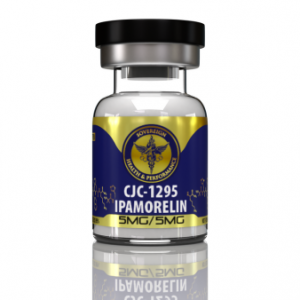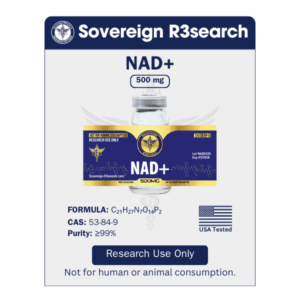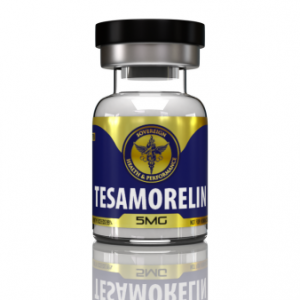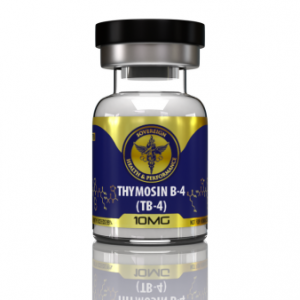
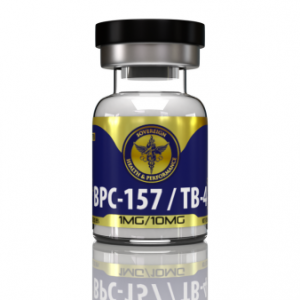
BPC-157 & TB-4 Blend
$119.00 Original price was: $119.00.$99.00Current price is: $99.00.
Research Only Purposes.
- Description
- Quality Documentation
- Additional information
Description
Combining BPC-157 and TB-4 for Research Use Only
Executive Summary
BPC-157 and Thymosin Beta-4 (TB-4, or its synthetic fragment TB-500) are two peptides extensively studied in preclinical models for their roles in tissue regeneration, angiogenesis, and inflammation control. When combined, they may produce synergistic effects—accelerating cell migration, collagen remodeling, and vascular repair more efficiently than either peptide alone. These complementary mechanisms have driven increasing research interest in muscle, tendon, ligament, and epithelial tissue healing.
1. Tissue Regeneration and Repair
BPC-157 has been shown in numerous rodent and in vitro studies to enhance regeneration of muscle, tendon, ligament, and epithelial tissues. It works by stimulating angiogenesis, activating fibroblasts, and modulating growth factors such as VEGF and FGF involved in collagen and extracellular matrix synthesis.
TB-4 promotes regeneration primarily through cell migration and cytoskeletal reorganization, enabling repair cells to reach damaged areas efficiently. It also upregulates integrin-linked kinase (ILK) and increases laminin-5, both key factors in wound closure and structural remodeling.
Together, BPC-157 and TB-4 appear to create a “repair-friendly microenvironment”—where BPC-157 initiates vascular and fibroblast activity while TB-4 mobilizes the cells needed to complete tissue formation.
References:
-
Sikiric P, et al. Body Protection Compound (BPC-157) and the healing of muscle, tendon, and ligament injuries. Curr Pharm Des. 2020;26(24):2781–2796.
-
Goldstein AL, et al. Thymosin beta 4: a multifunctional tissue repair and regeneration peptide. Ann N Y Acad Sci. 2012;1269(1):92–97.
2. Angiogenesis and Blood Flow Restoration
Both peptides have demonstrated strong pro-angiogenic effects.
-
BPC-157 upregulates VEGFR2 signaling and nitric oxide (NO) release, stimulating endothelial cell proliferation and new capillary formation.
-
TB-4 increases endothelial cell migration and tubule formation, crucial steps for microvascular regeneration.
When combined, they may promote faster revascularization of damaged tissue, restoring oxygen and nutrient delivery earlier in the healing process.
References:
3. Staresinic M, et al. The influence of BPC 157 on blood vessel function and angiogenesis. J Physiol Pharmacol. 2003;54(Suppl 1):191–203.
4. Malinda KM, et al. Thymosin beta 4 stimulates directional migration of endothelial cells and promotes angiogenesis. J Cell Sci. 1997;110(Pt 15):2081–2089.
3. Cell Migration and Cytoskeletal Dynamics
TB-4’s most unique contribution is its ability to regulate actin polymerization, which gives cells the capacity to move toward injury sites. By binding G-actin, it controls actin sequestration and availability—an essential process in cell motility, wound closure, and tissue integration.
Meanwhile, BPC-157 enhances fibroblast outgrowth and tenocyte migration, potentially by modulating the FAK–paxillin signaling pathway. Together, they create both a signal and a path for repair cells to follow—TB-4 drives the movement, while BPC-157 amplifies the biochemical signals that direct it.
References:
5. Huff T, et al. Thymosin beta4 is involved in cytoskeletal reorganization and cell migration by regulating actin polymerization. Ann N Y Acad Sci. 2002;979(1):123–132.
6. Chang CH, et al. BPC 157 promotes tendon fibroblast outgrowth and cell survival under stress conditions. J Orthop Res. 2019;37(9):2056–2065.
4. Growth Hormone and Regenerative Synergy
Research suggests that both peptides may interact with growth hormone (GH) and IGF-1 pathways, indirectly influencing repair speed and collagen synthesis.
-
BPC-157 has been found to modulate GH receptor expression and upregulate early growth response genes in healing tissue.
-
TB-4 indirectly enhances the effect of GH by increasing local sensitivity to growth factors during tissue remodeling.
This dual effect may explain why athletes and researchers have observed accelerated recovery rates when GH-mimetic pathways are active concurrently with peptide therapy.
References:
7. Vukojevic J, et al. BPC 157 modulates the GH/IGF-1 axis during healing processes in rats. Growth Horm IGF Res. 2018;41:10–17.
8. Sosne G, et al. Thymosin beta 4 promotes corneal epithelial cell migration and modulates growth factor signaling pathways. Exp Eye Res. 2004;78(6):1137–1143.
5. Inflammation Modulation and Pain Reduction
Both peptides also exhibit anti-inflammatory and neuroprotective properties that help prevent chronic injury cycles.
BPC-157 stabilizes the gut-brain axis, reducing systemic inflammation and local nociceptive signaling.
TB-4 decreases inflammatory cytokines (e.g., IL-6, TNF-α) while promoting M2 macrophage polarization—an essential shift toward tissue repair and away from chronic inflammation.
Together, they may help shorten the inflammatory phase and transition tissues more quickly into the remodeling stage.
References:
9. Seiwerth S, et al. BPC 157 as a modulator of inflammation and pain pathways. Curr Pharm Des. 2020;26(24):2797–2810.
10. Sosne G, et al. Thymosin beta 4 modulates inflammatory cytokines and accelerates wound healing. FASEB J. 2002;16(6):737–739.
6. Emerging Research Directions
Future studies are exploring these peptides in models of chronic injury, fibrosis reversal, and organ protection. Notably, BPC-157 has shown potential in nerve regeneration and vascular damage repair, while TB-4 continues to be investigated in cardiac ischemia and corneal regeneration.
Their overlapping yet distinct mechanisms make them a prime focus for combination studies in regenerative medicine.
References:
11. Jelovac N, et al. BPC 157 and the central nervous system: Neuroprotection and repair after trauma. Acta Pharmacol Sin. 2021;42(9):1417–1427.
12. Bock-Marquette I, et al. Thymosin beta 4 activates integrin-linked kinase and promotes cardiac cell migration after injury. Nature. 2004;432(7016):466–472.
Additional information
| CAS | 137525-51-0, 77591-33-4 |
|---|---|
| MG | 1/10 |
| Brand | Sovereign Health and Performance |




